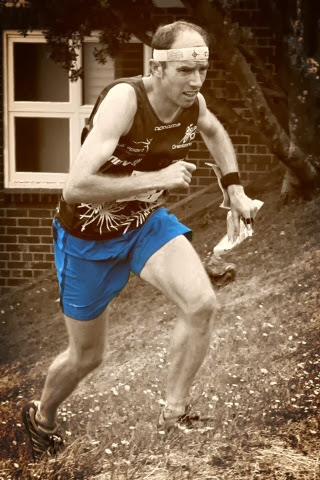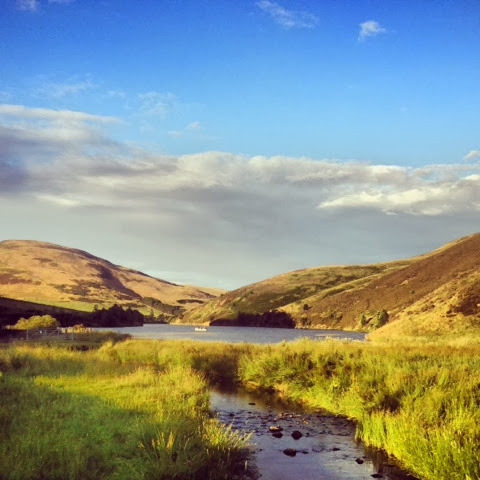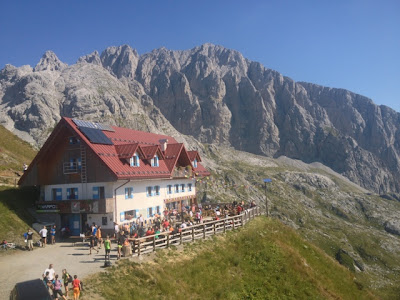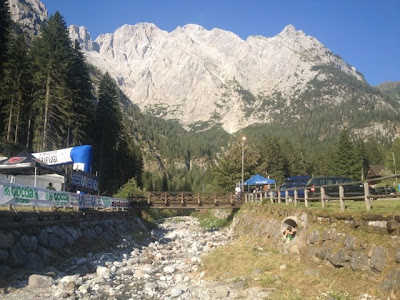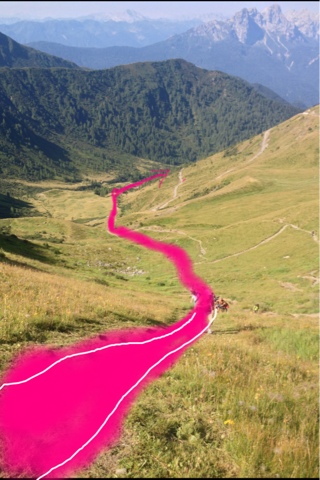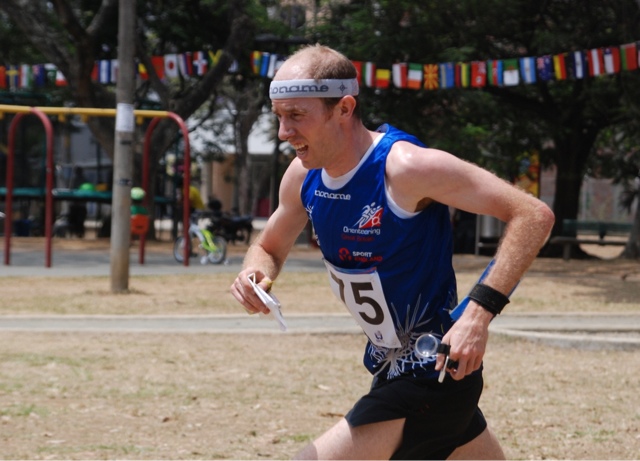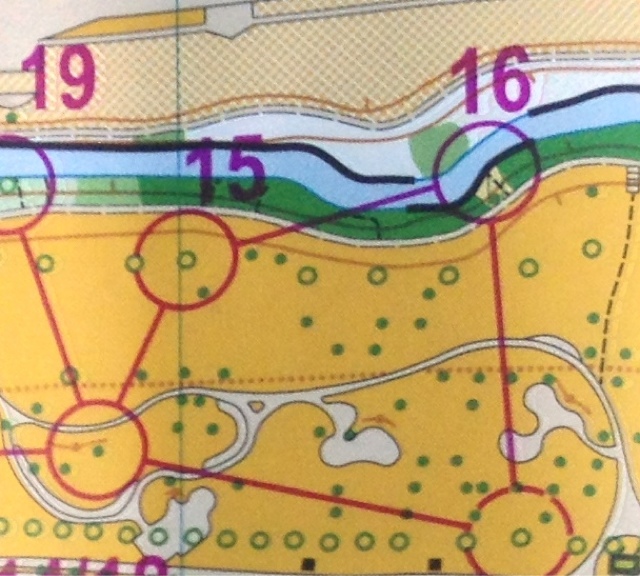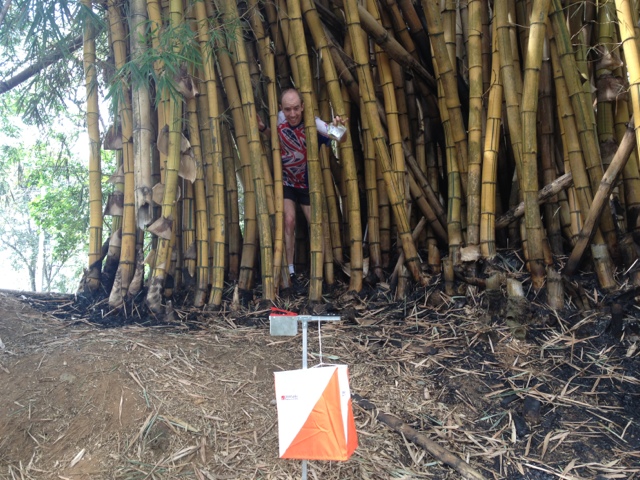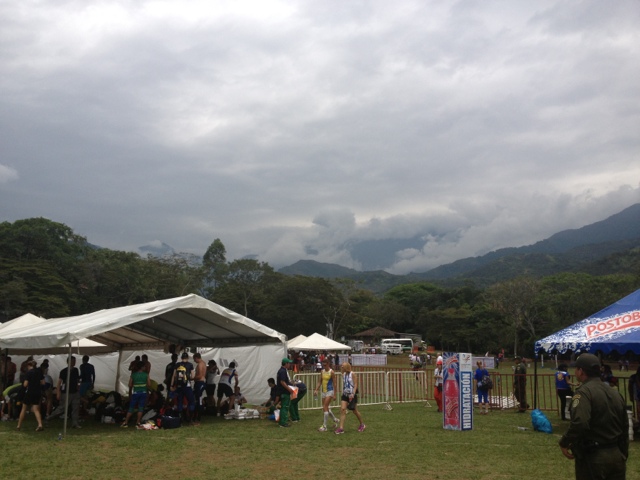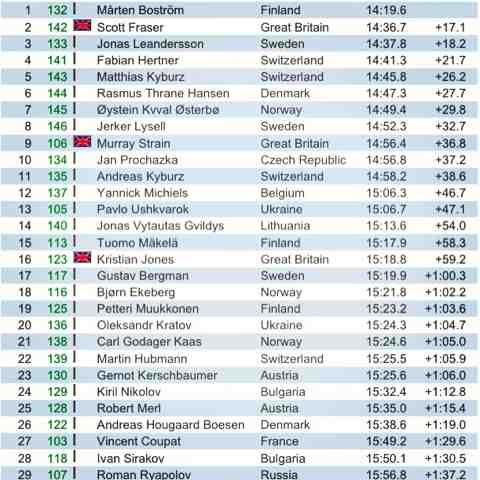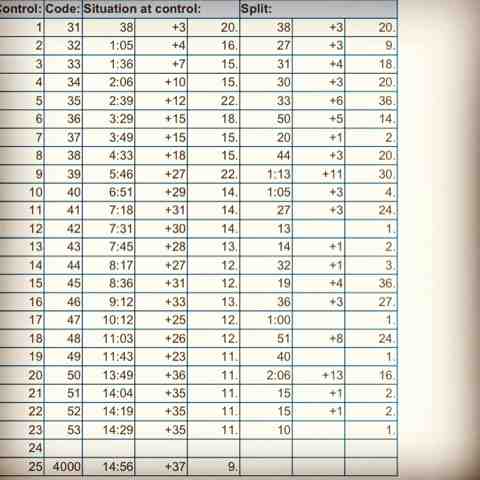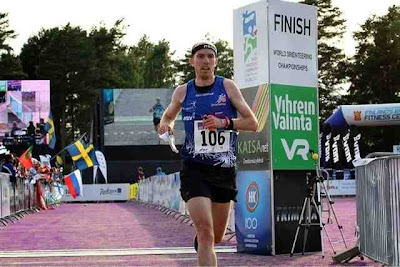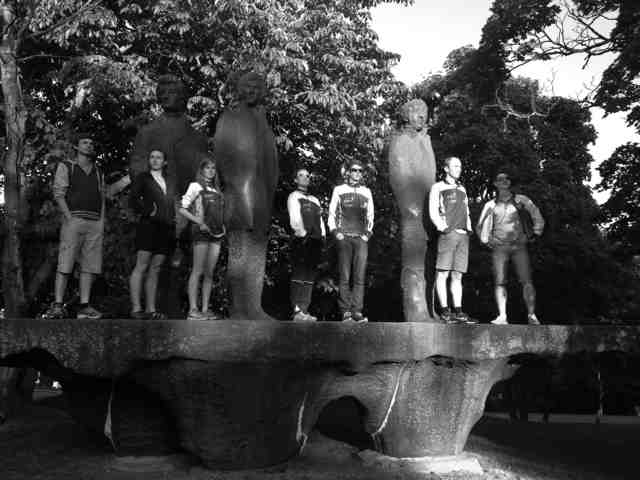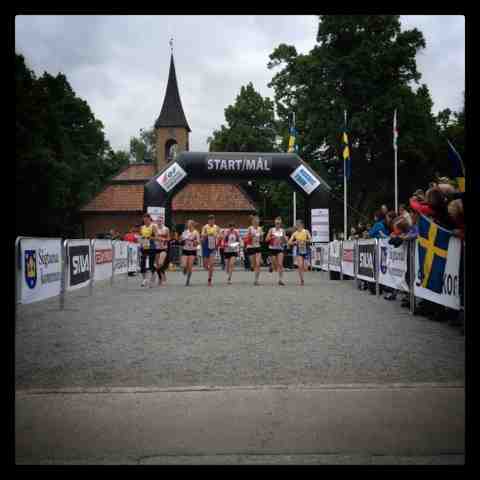Inspired by Robbie Simpson’s blog of his top 5 races of lastyear0 I thought I would try to come up with my own list. I couldn’t keep it to five though so I split it into two
lists: my top five sprint orienteering races and my top five ‘other’ races. I
do sprint races because I’m (usually) good at them and I find them exciting and
I do everything else for fun so I think it is a fair way to split things.
Top five Sprint races
5. NZ World Cup – Sprint Final
A real eye opener and a bit of a shock to the system. The
terrain was completely embargoed beforehand and we had only the roughest of
ideas about what was in store before we started. What we got was relentlessly
difficult route choice on both a macro and micro level, complex urban terrain
around the school grounds and a trip into the Prime Minister’s garden. I went
in confident after a good qualification race and got blown away – caught by my
minute man Jules Dent after just 4 controls and finishing over 2 minutes down.
After the race some of the world’s best orienteers were walking around shell-shocked,
asking “what just happened?
Map Part 1 - Part 2
Map Part 1 - Part 2
4. World Games
At the other end of the season was a race at the other end
of the technicality scale. About the only difficult thing about the race was
keeping the pace up despite the hot humid conditions. A small mistake right at
the end cost me the chance of winning my first international medal but I still
finished 6th – my best ever result so it has to make the top 5.
Map
Map
3. Jan Kjellstrom
The JK Sprint round Reading University was the first big
race of the British season and I really put a lot of pressure on myself to
start the season well. One small mistake where I almost ran across an area of
OOB grass (marked on the map but not the ground) was the only flaw in an
otherwise perfect run which was enough to get me the win and with it
pre-selection to WOC.
JK Sprint Map
JK Sprint Map
2. Nordic Tour – Finland (Qualification)
The first two sprints in the Nordic Tour were unmitigated
disasters for me so when we arrived in Finland I was keen to put them behind me
and focus on racing hard. The qualification race round some university halls of
residence and a bit of the city of Turku was very British in style and I made
the most of it to finish in the top 5 for the first time at this level (albeit
in qualification). The final was OK and I got my first World Cup top 10 result but
I didn’t have quite as good feeling in that race as the qualification where
everything went to plan.
1. WOC
How to steal victory from the jaws of defeat. In the morning
I almost crashed out when I ran off the map in qualification. I can’t explain
how that happened and the thought of it still sends shivers down my back. I
made it to the final by four seconds .
Having made it there I was determined to make the most of my
second chance so with a clear plan and good idea of the challenges ahead I
sprinted out of the packed baseball arena into the town of Sotkamo. The next 15
minutes are a bit of a blur of route choices, temporary fences and spectators
but I remember that I was ‘on it’ and executed a run I am really happy with. I
didn’t get every route choice correct and there was one “Eek what’s going on”
moment but it was a tricky sprint and no one was perfect. My run earned me a
long desired top 10 result and was part of GBR’s best ever day at the World
Champs, with a silver medal, top five, top ten and two top 20 results to shout
about (out of only five starters).
I’m unusual in the international orienteering world in that
I work full time, in a non-sporting world (the insurance division of a large
bank). I don’t think my colleagues really get
orienteering. They are generally supportive and this year were exceptional by
letting me take a laptop out to Finland so that I could minimise travel and
make my training as relevant as possible by being based out there for the three
weeks before WOC but they still don’t really know what I do. When I was running
WOC and aiming for a top 10 I was doing it for myself but having got back to
the office being able to say that I was top 10 in the world really makes a
difference – my colleagues do really get
what that means. With the story of my ‘home games’ (a popular phrase I’ve
pinched from the 2012 Olympics and 2014 Commonwealth Games hype) coming in 2015
I think I can count on their support for the next few years.
Top 5 non-sprint races
5. WOC Long Test Race
Someone (Tomas Dlabaja maybe?) who had an early start came
back from this and said “if you are an orienteer, you have to love this”. I
have to agree. WOC Long was never a goal for me so I’d done no specific
training for this but it was just such a joy to run through the fast gently
undulating track free moraine.
4. British Middle Distance Championships
Winning this race was the least expected result of the year
for me so it has to rate a mention in the top five. A cool mix of tricky
overgrown old mine workings and fast moorland running, speed control was key
here and I managed to nail it.
3. Scottish 5km Road Running Championships
A blustery night on Cramond prom meant this was a real race
rather than a time trial. The tactics of when to push and when to sit in were
key so I put my watch away and tried to finish as highly as I could. Andrew
Butchart got it slightly more right than me but I was rewarded with a silver
medal (my first at national level in Scotland) and surprisingly a one second PB
– despite the less-than-ideal conditions.
2. WOC Relay
First leg for a ‘developing’ GB team. What would happen when
my sprint legs met the tough Finnish terrain and my urban-evolved brain met the
vague Nordic contours and rocks? Answer – a smart, controlled run where I
stayed in touch with the leaders, navigating my own way but using all the other
guys to good effect. I came in 7th, in the main pack and within a
minute of the Swiss leaders. Job done – hopefully I get to do it again in the
future.
1. Pentland Skyline
About the only race of these ten that I’ve not mentioned on
my blog already this year so I’ll give it a little more attention than the
others. I have written about it in the past, when I had a crack at breaking the
record three years ago: in short, it’s an iconic long hill race just south of
Edinburgh which my mentor Andy Kitchin has held the record for for 20 years
despite the best efforts of hill runners and orienteers such as Jon Duncan,
Jamie Stevenson and Joe Symonds. Since that effort three years ago, where I
posted the second fastest time ever, I’ve not managed to fit in another go
until this year. I did slightly handicap my chances this year by running the
English Road Relay Championships the day before, which involved a 5.85km
hammering on the roads followed by a six hour drive home in the back of a
cramped car but that was perhaps a blessing in disguise. With tired legs I took
it pretty easy at the start and was actually in third place after the first
three hills. I was happy enough just cruising along – I figured that if it wasn’t
a day for breaking records at least I’d get a good long run out of it, and
there are few things I enjoy more than a long run in the hills. On the long
fourth climb up Turnhouse I got into the lead and a pattern started where I
would pull away from Matt Whitfield on the series of climbs along the Carnethy
ridge then he would reel me in when I cruised the downhills. There are 16
climbs in total on the Skyline route which means 16 descents too. Overdoing it
on one descent can wreck your legs for the rest of the race so I was aiming for
damage limitation on the descents in the first half.
Skyline Route map on ScottishHillRacing
Skyline Route map on ScottishHillRacing
I hit halfway in just under 73 minutes, around a minute
faster than three years ago. From there I concentrated on keeping up a steady
pace and making sure I was taking the best lines. The third quarter of the
course is the bit I am least familiar with and also the section with no paths
but fortunately I managed to fit in a recce on a cheeky Friday Night Hill Run a
few weeks earlier so I was confident I’d learnt my lines. The landowner
requested we take a new line off Hare Hill to prevent erosion which probably
added a minute or so of bashing through deep heather, although I probably lost
less here than others thanks to my lanky legs and orienteering background.
(Interestingly a few weeks later a new bulldozed landrover track appeared on
the side of the same hill, presumably made by the same erosion-worried
landowner). That behind my I nailed the route up Black Hill, finding the trod
all the way and then took a new line across to Bell’s Hill which had the
advantage of missing the tussocky marsh but the disadvantage of missing Oleg,
Kara and baby Inis with their supply of Jelly Babies. It paid off though as I
was able to keep running all the way up the hill, the first time I’ve managed
this in the race. I still thought I would be touch and go for the record so
when my hat blew off on the descent of Harbour Hill I wasn’t stopping to get it
– what if I missed the record by a couple of seconds! Sorry Arc’teryx for
losing your kit – hopefully someone found it and is making use of it.
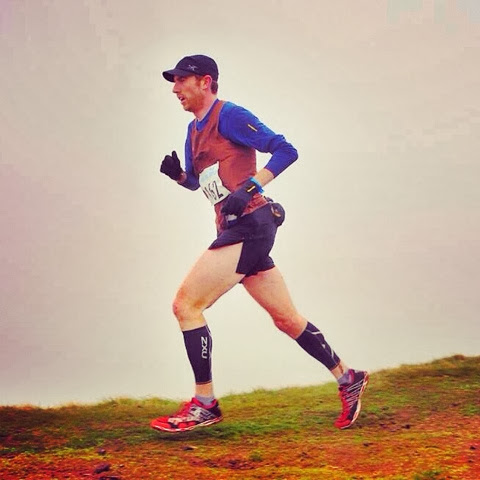 |
| Running the Skyline - before my hat blew away. |
I didn’t have a record of my splits from my previous run
with me but once I got over Capelaw I knew I must be in with a good chance of
breaking the record. However it was only when I got to the summit of Allermuir
that I realised by how much. The last two hills are just the first two hills in
reverse to get you back to the finish at the ski centre. I knew it had taken 15
minutes to get there at the start and now I had over 15 minutes to get back
down – a 300m descent rather than a 300m climb. This is ON! Apart from one scary moment on the final
climb when my legs threatened to seize up I was able to keep pushing all the way to the
end. My whooping and hollering as I careered down the final slope alerted the
finish team to my presence and as I crossed the finish line I got a high five
from Mr Kitchin himself – passing on the baton of Skyline record holder as I
smashed his mark by just over six minutes: about four minutes faster than I
thought I was capable of.
So the Pentland Skyline was undoubtedly my race of the year.
It’s probably the one race that, if my career ended today, I would be truly happy
with. I can see the Pentland Hills out my kitchen window and it’s quite nice to
look out and think ‘Yes, they are my
hills’.
The Skyline got its revenge though, as not long after it I
developed an inflammation in my knee which hampered my training for the rest of
the year. I think I’m on top of it now and I’m gradually building my volume
back up and hoping I can still do all I want to do in 2014. That starts with
trips to Norway and Italy for the Bergen Sprint Camp and MOC/PWT camps
respectively in the build up to the European Champs in Portugal where I’ll run
Sprint, Middle and hopefully Relay. After that attention turns to the summer,
with trips to Finland for the WC Sprint and Jukola in the build up to WOC and
then a return to the SkyRunning scene – hopefully racing the Dolomites Skyrace,
Sierre-Zinal and Ultraks before starting the 12 month build up to those long
awaited home games. Here we go!
